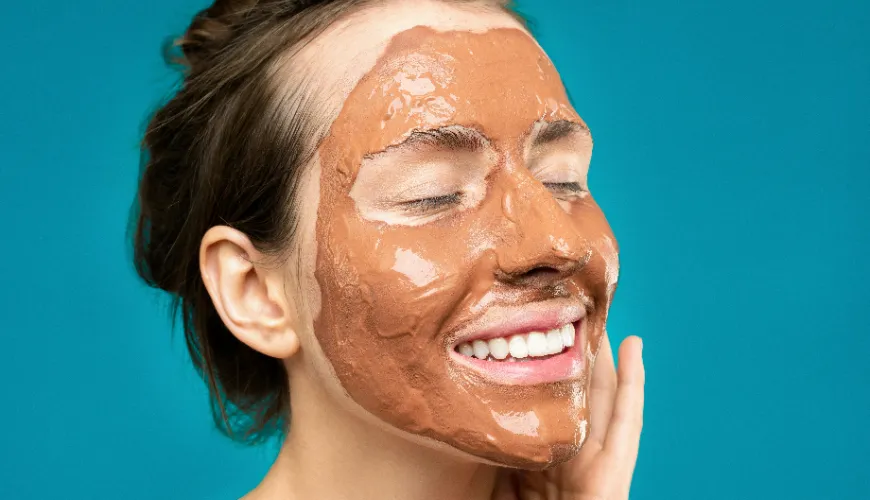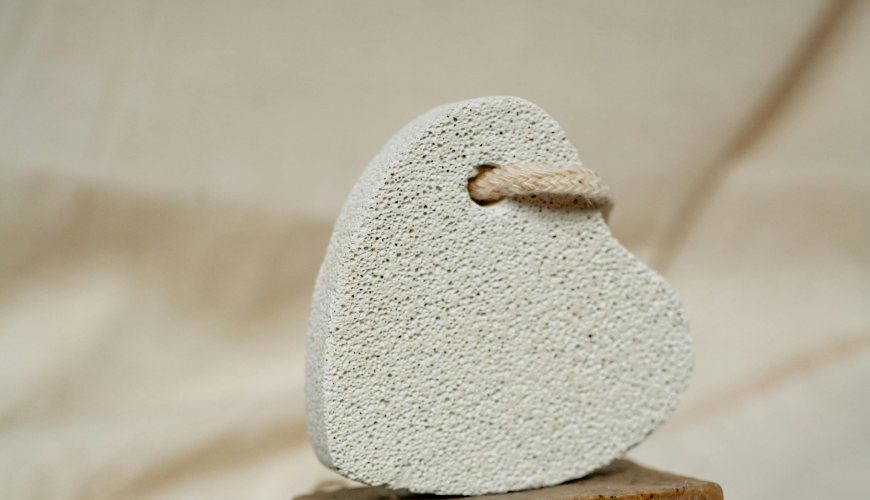
What is pumice and what can it be used for

What is pumice stone?
Pumice is a lightweight and porous volcanic stone that is known for its unique properties and wide range of uses. In this article, we take a detailed look at its origins and practical uses in cosmetics and household applications.
How pumice is formed
Pumice is a mineral that is formed when volcanic magma reaches the surface from deep within the Earth's crust during a volcanic eruption. Extremely hot magma contains molten aggregate along with various gases. To the extent that magma rises rapidly to the surface, the pressure of the surrounding environment is reduced, allowing the gases to expand and escape from the hot lava.
The key to the formation of pumice is then the cooling of the magma during this expansion of gases. The magma begins to solidify rapidly, and the gases trying to escape form bubbles in the rock. These bubbles then remain in the solidifying material, leading to the formation of a light, porous rock full of small cavities - pumice. This makes pumice very porous and lightweight - it is a rock that can float on the surface of water.
There are different types of pumice, which vary in colour, density and pore size. The most commonly encountered pumice is white to grey, which is ideal for cosmetic and construction uses. However, domestic and garden applications are also common. In cosmetics, it is used for its abrasive properties, especially in skin peeling products.
What can pumice help you with
Pumice is used in households and cosmetics for its unique properties. Here are some handy tips to inspire you:
- Removing hard skin on feet: Pumice stone is ideal for gently removing hard skin on heels and feet. Regular use of pumice stone can help keep feet smooth and free of hard spots.
- Toilet Cleaning: Pumice is great for removing limescale and other deposits in the toilet bowl. Due to its abrasive nature, it can clean effectively without scratching the ceramic surface.
- Body Scrub: Pumice can also be used as a natural exfoliant for the whole body. It helps to remove dead skin cells and improves blood flow in the skin, thereby increasing its brightness and health.
- Shoe Odor Removal: A small piece of pumice placed in a shoe or sports bag can absorb moisture and odors, which prevents unpleasant odors.
- Chemical cleaning of grills and baking sheets: Pumice is excellent for removing burnt residue and grease from grill grates and baking sheets. Using pumice stone on these surfaces leaves the grates clean and extends their life.
- Improving soil drainage: Crushed pumice stone can be added to soil to improve drainage and structure, which is especially useful for plants that require well-drained soil, such as succulents or certain types of orchids.
These examples demonstrate the wide range of uses that pumice offers, not only in personal care but also in gardening and household cleaning.
Pumice and the environment
Although pumice is a natural material, its extraction can have some impact on the environment. It is therefore a good idea to choose pumice from sustainable sources and to use environmentally friendly processing methods. When buying pumice, it is advisable to look for products from reputable producers who guarantee its quality and origin. It is a good idea to avoid low-quality imitations.

